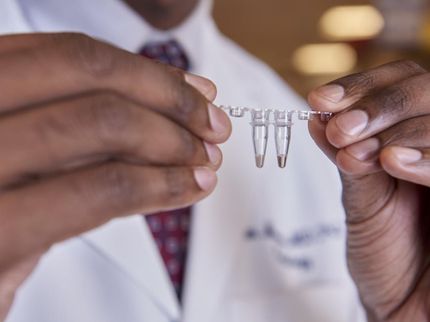Brown fat responsible for from heart disease-related deaths in winter
More people die from heart-disease during the winter months, and according to a new study published in the journal Cell Metabolism, the increase in mortality is possibly due to the accelerated growth of atherosclerotic plaque in the blood vessels caused by the activation of brown fat by the cold.
It has long been known that the number of deaths from cardiovascular diseases increases during the winter. It has been speculated that this might be the result of over-exertion while shovelling snow and a general decrease in physical activity, although the underlying mechanisms have been unclear. The present study, which has been conducted by researchers at Karolinska Institutet, Linköping University and three universities in China, demonstrates a new principle by which the cold increases the risk of atherosclerosis.
The researchers conducted their study on a strain of mice genetically modified with a propensity for atherosclerosis. Mice, like humans, have both white and brown body fat. Normal rolls of fat consist mainly of white fat, which is a repository of surplus calories; brown adipose tissue, on the other hand, can convert fat into heat. This heat-generation process is activated by cold temperatures and has been considered beneficial to the health since it can reduce the amount of unnecessary white adipose tissue in the body.
“At first, we thought that the cold activation of brown fat would only make the mice thinner and healthier,” says Yihao Cao at the Department of Microbiology, Tumour and Cell Biology at Karolinska Institutet, and the Department of Medicine and Health at Linköping University. “Instead, we found that they ended up having more fat stored in the blood vessels. This came as a surprise and was the opposite of what we thought would happen.”
It turned out that exposure to low temperatures accelerated the formation of atherosclerotic plaque in the mice, which can cause myocardial infarction and brain haemorrhaging. Moreover, the cold made the plaque less stable, and if such plaque ruptures, stored fat can leak into the blood, blocking vessels in the heart and brain. The cold-activated breakdown of fatty acids in the mice’s brown fat led to the accumulation of low-density lipoproteins (LDL) in the blood and an increase in fat storage in the plaque.
“If this is also true for humans, it might be wise to recommend that people who suffer from cardiovascular disease should avoid exposure to the cold and to put on warm clothes when they are outside during the winter,” says Professor Yihai Cao.
The researchers hope to be able to extend their work on mice to studies on humans.
“It would be an extremely important discovery if we found this to be the case in humans too,” says Professor Yihai Cao. “Brown adipose tissue is affected not only by the cold – its activation can also be blocked by several existing drugs, something that we would like to study further.”
It was long believed that people only have white fat tissue, and that brown fat was only found in certain mammals, such as rodents; as it is, research has shown that the human body contains two types of brown adipose tissue. Recently, researchers from Sweden and elsewhere has revealed that infants at least have the typical brown, heat generating fat tissue, a discovery that raised hopes about finding new means by which to treat obesity. The present study, however, suggests that activating brown fat to reduce bodyweight can be risky in combination with some form of cardiovascular disease.
Original publication
Mei Dong, Xiaoyan Yang, et al., ‘Cold exposure promotes atherosclerotic plaque growth and instability via UCP1 dependent lipolysis’, Cell Metabolism, online 2 July 2013























































